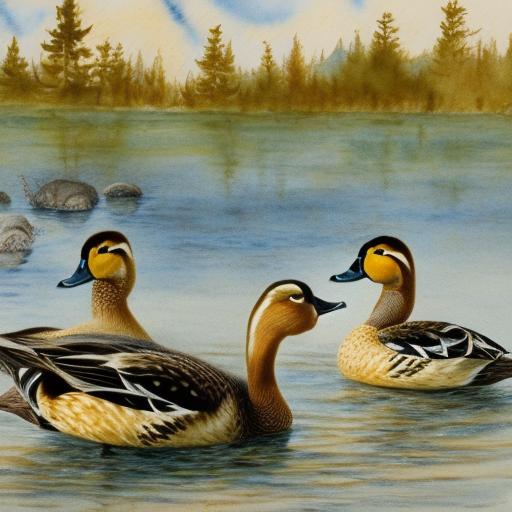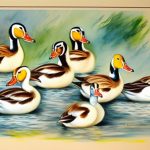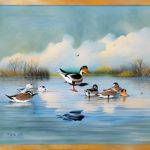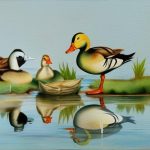Ducks are a popular choice for poultry farming in Alaska due to their ability to thrive in cold weather and their high egg and meat production. There are a variety of duck breeds that are well-suited for the Alaskan climate, each with its own unique characteristics and benefits. Whether you are looking for a duck breed for egg production, meat production, or simply as a pet, there are plenty of options to choose from. In this article, we will explore the native duck breeds in Alaska, popular domestic duck breeds, as well as duck breeds specifically suited for egg and meat production and cold weather. Additionally, we will discuss the conservation of duck breeds in Alaska and the importance of preserving these unique and valuable genetic resources.
Key Takeaways
- Alaska is home to a variety of duck breeds, both native and domestic, that are well-suited to the state’s unique climate and environment.
- Native duck breeds in Alaska include the Harlequin, Aleutian, and Spectacled Eider, which have adapted to the harsh conditions of the region.
- Popular domestic duck breeds in Alaska include the Pekin, Khaki Campbell, and Rouen, which are valued for their egg-laying abilities and adaptability to cold weather.
- Duck breeds like the Golden 300 Hybrid and the Welsh Harlequin are well-suited for egg production in Alaska, providing a sustainable source of fresh eggs.
- For meat production, duck breeds like the Pekin and the Muscovy are popular choices in Alaska due to their fast growth and high-quality meat, making them ideal for small-scale farming and homesteading.
Native Duck Breeds in Alaska
Alaska is home to several native duck breeds that have adapted to the harsh climate and rugged terrain of the state. One of the most well-known native duck breeds is the Harlequin duck, which is known for its striking plumage and strong swimming abilities. The Harlequin duck is a small, compact bird with a distinctive blue and white coloration, making it a popular choice for birdwatchers and wildlife enthusiasts. Another native duck breed in Alaska is the Barrow’s goldeneye, which is named after the town of Barrow in northern Alaska. This duck breed is known for its iridescent green head and white crescent-shaped patch on its face. The Barrow’s goldeneye is a diving duck that feeds on aquatic plants and invertebrates, making it well-suited for the lakes and rivers of Alaska. These native duck breeds are an important part of Alaska’s natural heritage and play a vital role in the state’s ecosystem.
Popular Domestic Duck Breeds in Alaska
In addition to native duck breeds, there are also several popular domestic duck breeds that are commonly raised in Alaska. One of the most popular domestic duck breeds is the Pekin duck, which is known for its large size, white plumage, and excellent meat production. Pekin ducks are also prolific egg layers, making them a versatile choice for both meat and egg production. Another popular domestic duck breed in Alaska is the Khaki Campbell, which is prized for its high egg production and calm temperament. Khaki Campbell ducks are known to lay upwards of 300 eggs per year, making them an excellent choice for small-scale egg production operations. Other popular domestic duck breeds in Alaska include the Indian Runner, Rouen, and Cayuga ducks, each with their own unique characteristics and benefits for poultry farmers.
Duck Breeds for Egg Production in Alaska
When it comes to egg production, there are several duck breeds that are well-suited for the Alaskan climate. In addition to the Khaki Campbell, other excellent egg-laying duck breeds include the Indian Runner and the Welsh Harlequin. Indian Runner ducks are known for their upright posture and excellent egg production, often laying up to 200 eggs per year. The Welsh Harlequin is a relatively new breed that has gained popularity for its high egg production and calm disposition. These duck breeds are excellent choices for small-scale egg production operations in Alaska, providing a sustainable source of fresh eggs for local communities.
Duck Breeds for Meat Production in Alaska
For those interested in meat production, there are several duck breeds that excel in this area as well. The Pekin duck is one of the most popular choices for meat production due to its large size and excellent meat quality. Pekin ducks are known for their rapid growth rate and efficient feed conversion, making them an ideal choice for commercial meat production operations. Muscovy ducks are another popular choice for meat production, as they have a leaner meat with less fat than other duck breeds. Muscovy ducks are also known for their ability to forage for food, making them a sustainable choice for free-range meat production in Alaska.
Duck Breeds for Cold Weather in Alaska
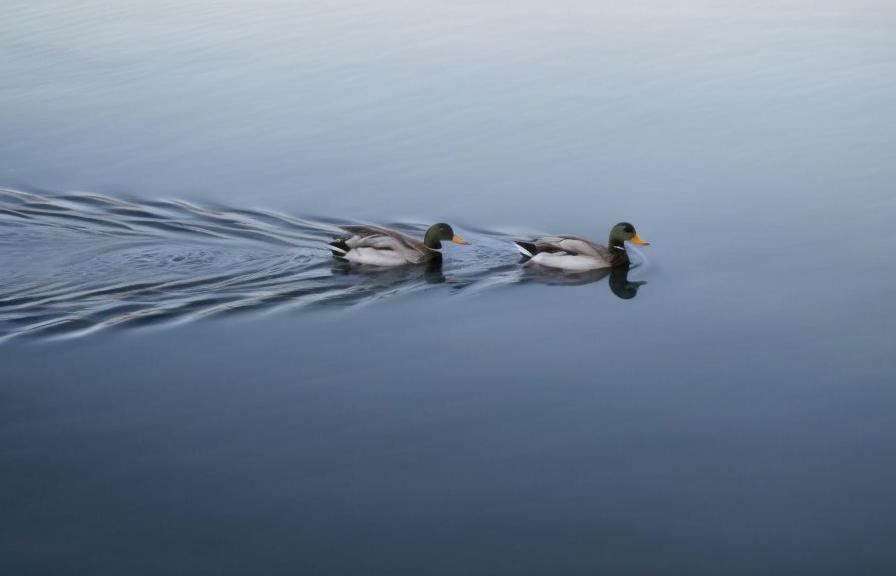
Given Alaska’s harsh climate, it is important to choose duck breeds that are well-suited for cold weather. One of the best cold-hardy duck breeds is the Buff duck, which has a thick layer of insulating down feathers to keep them warm in frigid temperatures. Buff ducks are also known for their calm temperament and excellent foraging abilities, making them an ideal choice for small-scale poultry farming in Alaska. Another cold-hardy duck breed is the Crested duck, which has a distinctive crest on its head and a thick layer of feathers to protect against the cold. Crested ducks are known for their adaptability to various climates and their ability to thrive in cold weather conditions.
Conservation of Duck Breeds in Alaska
The conservation of duck breeds in Alaska is an important issue that deserves attention and support from both poultry farmers and conservationists. Many native duck breeds in Alaska are at risk of decline due to habitat loss, predation, and competition from invasive species. It is crucial to preserve these unique genetic resources to maintain biodiversity and ensure the long-term sustainability of Alaska’s ecosystems. Organizations such as the Livestock Conservancy and local conservation groups play a vital role in raising awareness about the importance of preserving native duck breeds and implementing conservation programs to protect these valuable genetic resources. By supporting conservation efforts and promoting sustainable poultry farming practices, we can help ensure the survival of native duck breeds in Alaska for future generations to enjoy and benefit from.
If you’re interested in learning more about raising ducks in Alaska, you might also want to check out this informative article on creating the perfect farmhouse chicken coop at PoultryWizard. It offers valuable insights into creating a comfortable and functional space for your poultry, which can be adapted for ducks as well.
FAQs
What are the most common breeds of ducks in Alaska?
The most common breeds of ducks in Alaska include the Mallard, Northern Pintail, Green-winged Teal, and American Wigeon.
What characteristics make these duck breeds well-suited for Alaska’s environment?
These duck breeds are well-suited for Alaska’s environment due to their ability to withstand cold temperatures, their migratory patterns, and their adaptability to various wetland habitats.
Do these duck breeds play a significant role in Alaska’s ecosystem?
Yes, these duck breeds play a significant role in Alaska’s ecosystem by contributing to the balance of wetland ecosystems, serving as prey for predators, and contributing to the overall biodiversity of the region.
Are there any conservation efforts in place to protect these duck breeds in Alaska?
Yes, there are various conservation efforts in place to protect these duck breeds in Alaska, including habitat preservation, hunting regulations, and research initiatives to monitor their populations and behaviors.
Meet Walter, the feathered-friend fanatic of Florida! Nestled in the sunshine state, Walter struts through life with his feathered companions, clucking his way to happiness. With a coop that’s fancier than a five-star hotel, he’s the Don Juan of the chicken world. When he’s not teaching his hens to do the cha-cha, you’ll find him in a heated debate with his prized rooster, Sir Clucks-a-Lot. Walter’s poultry passion is no yolk; he’s the sunny-side-up guy you never knew you needed in your flock of friends!

